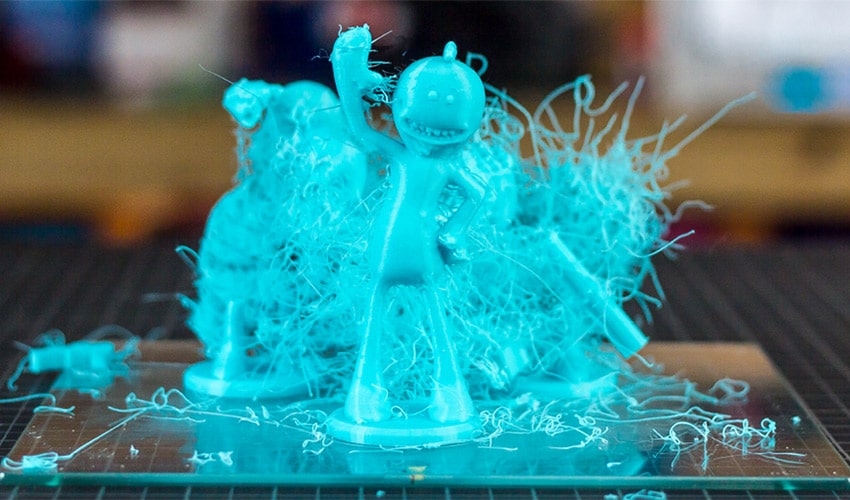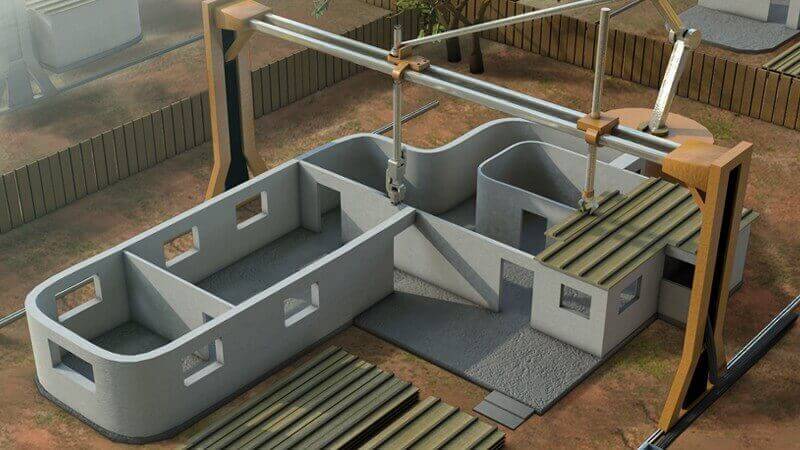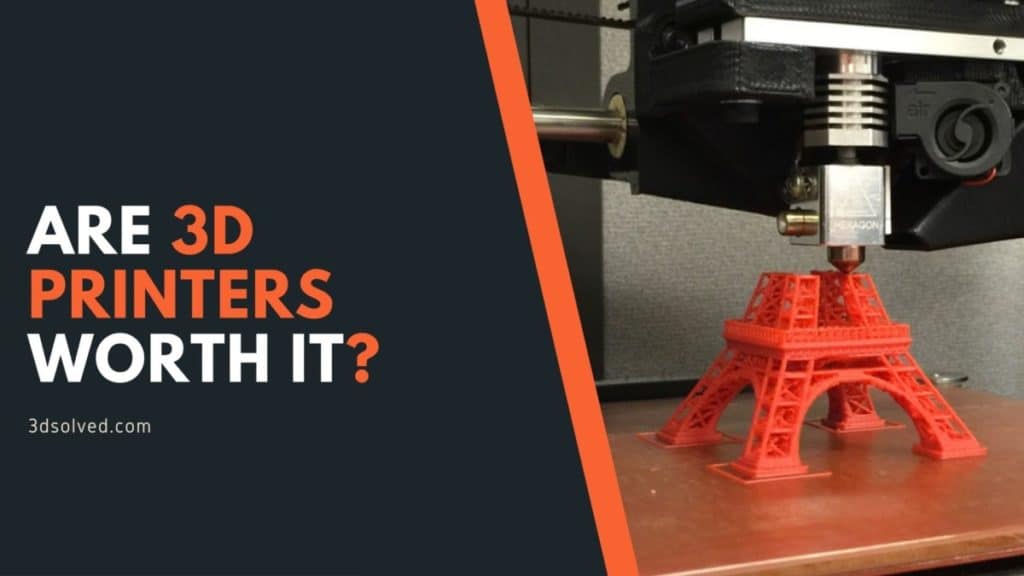Some years ago, the idea of having a machine in your own house that can transform a digital model into a real tangible object looked like something out of a sci-fi movie. If you wanted to have in your own hands a figure of let’s say, Batman, there was no other option than going to a local shop and buying it. None of us thought about having our own toy-making machine, with thousands of options to print and collect.
Even more, a device that allows you to replace a broken part of a home appliance that you can’t get at a spare parts store.
Do you need to hang your headset under your desk but you don’t have the right hook for it? Just explore the web, search for the one you like the most and print it. Just like that.
Well, nowadays we know 3d printers are real and anyone can have one at home. There are hundreds of different models for every budget available. With some learning, you can start creating (almost) anything.
3d printing technology offers a new way of making things, and its applications are vast: rapid prototyping, research, bio-printing, automotive/aerospace applications, education, art, you name it.
But, if you’re interested on becoming a member of this community, there are some considerations to do before you spend your hard earned cash on a printer.
So, In Short: Once you get over the learning curve and are capable of producing quality prints that can be used for prototyping, repairing household items, and even for making money (in some cases), 3D printing is definitely worth it. However, 3D printers are expensive, as is the filament, you will need to learn to design the models and even troubleshoot the printer, which may lead you to stop using it.
Let’s explore a little of the 3d printing world so you can decide for youself.
Advantages of owning a 3d printer

There are some clear advantages to owning a 3D printer as well as disadvantages, so let’s go over some of them.
Just keep in mind that some of these points may not apply to you specifically, but I think that they are worth mentioning.
It improves your creativity
A 3d printer won’t transform you into a creative person, although it may help the creative juices start flowing over time, but it will let you transform those ideas into something real.
As you get more experienced with this tool, new ideas will come to you. Eventually, you’ll learn that a 3d printer can make complex pieces which can’t be made by traditional modeling, and this way you can create prototypes, fun and intricate 3D models, or just replace broken things in your home by printing a replacement part, such as a gear.
It’s fun
Just watching a 3d printer running is something hypnotic. The way the extruder moves across the bed, the “futuristic machine” sounds, the electronic parts with sparkling lights… Every person’s first encounter with a 3d printer is unforgettable.
If you haven’t seen one working yet, just do it… You’ll know what I mean.
In addition to being actually useful, this is one of the reasons I decided to get one, since I love watching it print, plus you get to learn quite a lot (more on this later one since you actually will need to learn more than you probably thought).
You can save time and money
Specific spare parts can be very expensive. Sometimes, they are sold as a pack, so you have to buy parts you don’t need just to replace one. With a 3d printer, you only print what you want, at a very low cost and really fast.
If you don’t care much about the aesthetics of the print, a small piece can be printed in less than an hour.
Now, when I say that it can save you money, I don’t mean “go out and buy a printer just to stop buying a couple replacement parts at the hardware store”, since this wouldn’t make much financial sense, but over time, since you can fix so many things that might break at home or in your car, it may end up paying for itself.
It could help you develop a profitable venture
You can start your own business by selling your prints. Decorative objects, toys, lamps, keychains, dog tags… just find out what’s needed in your neighborhood and offer it, or you could start an online store, Etsy shop… the possibilities are endless.
Many people have succeeded by finding original ideas to sell. As you don’t necessarily need to have items in stock, you can avoid sticking with objects that no one wants to buy and just print whatever someone orders.
Disadvantages of owning a 3D printer

Now that some of the pros are out of the way, let’s get into the cons, since not everything about 3D printing is all sunshine and rainbows.
3d printers take up a lot of space
Each printer needs at least 60 cm2 of free space on a stable desk or piece of furniture exclusively dedicated to it. If you live in a small apartment, it will be very difficult to find a proper space to place your brand new 3d printer.
Besides that, if you wish to use some particular plastics, like ABS or Nylon, you can’t have your printer running in the same room with you or other people since they emit fumes and toxic gases when heated.
They are noisy
When sitting next to a working 3d printer, you’ll be hearing about 60 dB of sound. That’s comparable to a vacuum cleaner.
Sometimes, you’ll have to print big objects that require approximately 10 or more hours, so you’ll probably end up with the printer running at night. I hope your partner shares your passion… or both you and your new 3d printer will soon have to find a new home.
Important Note: Some printers, like the Prusa Mini which I own, are nowhere near as loud as some of the other printers. The newly released Elegoo Neptune barely makes a sound and you’ll find yourself checking it quite often because you’ll think that it stopped printing.
You can’t print creativity
3d printers are the perfect tool for creative people. Most people buy a printer, they place it on a rigid stable base and… they don’t know what to print.
Even if you had a lot of ideas, sooner or later you’ll have to create something new unless you want your 3d printer to become an expensive paperweight.
If you have any experience in design and using CAD software, then a 3D printer will be extremely useful and fun for you.
You will have to learn more about 3d printing than you initially thought
Even the most expensive 3d printers require you to invest some time to learn the basics. There is no “plug and play” in 3d printing: you must get over the “learning curve” before getting started.
Of course, getting an extremely affordable printer will only make things harder, which is why sometimes getting a printer that comes with a couple extra features, such as automatic bed leveling, can make your life that much easier.
That’s the reason why I got the Ender 3 v2, since the assembly is straightforward and all the settings that come in the slicer software are specifically tailored for that printer, meaning that you put it together and you’re ready to print without much fuss. It is not due to chance that this printer is one of the most popular entry-level machines.
If you are not a handy person, then I’d recommend spending a little more and getting one that will get you printing fast, since lots of people end up selling their printers after one or two months of failed attempts.
Fortunately, the 3d printing community is huge, and it’s full of gentle people that will help you get through this initial learning stage.
They increase the risk of fire at home
3d printers and pets, small children or even a curtain, are bad combinations. The use of high temperatures and moving parts may lead to a fire if you don’t supervise your printer.
An incorrect assembly or the lack of fire protection on a 3d printer are the main causes of accidents related to these machines.
You should keep your children and pets as far from the printer as possible, not only because of the fire hazard, but because they could get hurt, break the printer, ruin the filament, etc.
Myths about 3d printing

3D printers are oftentimes viewed as the end all be all solution for all your needs, but they aren’t genies that grant you wishes.
So, here are I will debunk a couple myths about 3D printing so that you don’t get disappointed if you decide to purchase one.
You can print anything
In some sense, this might be true. But, you depend on having the digital model you want to print.
So, besides learning how to print objects with your new printer, you’ll have to learn about digital design. And that’s even more difficult than learning the basics of 3d printing.
If you still haven’t developed your design skills and how to properly operate a CAD software, you will end up using some of the designs found on websites like Thingiverse, which will get old pretty quickly, plus the feeling of creating your own designs if much more fulfilling.!
3D printing will save you money
Unless you start your own business, 3d printers (still) can’t print money. So, if you bought one thinking about making money, you better have a really good idea that will make a products that people will love and buy. After all, it’s just like any other business.
However, like I mentioned before, if you own a 3D printer you can replace broken gears, repair many things in your home or car, and more, which will make you save money in the long run… I just wouldn’t get a 3D printer for this sole purpose. But it’s a nice bonus.
You can print with every material out there
When you search for 3d printing on the internet, there are lots of articles about biomedical implants, aircraft innovations or machines that can print an entire house or a car in one day… yes, a house!
Your FDM 3d printer, however, is limited to some plastics, and some materials need temperatures so high to be printed that a regular printer can’t even handle them. Other thermoplastics require an enclosure (not very common among cheap 3d printers), otherwise, they will start warping or cracking.
Before buying one, think well about what do you want to print and check if your machine meets the necessary requirements.
Some very cheap printers may only be able to print with PLA, for example.
If you want to know what temperatures each filament type requires to be printed properly if a heated bed is needed if the printer should have an enclosure, etc. then check the table I included in this article.
Technical difficulties of 3d printing

As I said before, there’s no “plug and play” here: you’ll have to learn new skills if you want to succeed. At first, you won’t be satisfied with the quality of your prints… if you get to print something, that is. A 3d printer will give you the results you desire after you learn some of of the basics, otherwise you’ll get frustrated soon and leave your printer there, gathering dust.
Again, this will vary depending on what printer you get: The cheaper ones usually will take more time to learn, you’ll have to do a lot more troubleshooting, etc.
Design skills
Unless you know how to design your own pieces or how to modify existing models, 3D printing will be an uphill battle. A complete designer must manage both organic (Blender, Zbrush…) and parametric (Solidworks, Solid Edge…) modeling software in order to deal with any situation required.
And that means hours and hours of practice in front of the screen.
Repair skills
3d printers are complex machines from the “computational” point of view, but they are simple from a “mechanical” standpoint. So, some issues can be solved just by adjusting screws or changing simple two-wired components.
In fact, most models are open-source: they were created under the idea of building your own printer with little knowledge. You can search for tutorials on YouTube explaining every single aspect of a 3d printer. There’s no excuse for not being able to learn how to calibrate and fix your machine.
Otherwise, you’ll end up spending even more money on a technician.
Computational skills
You don’t need to know about programming to start printing, but when the mechanical problem is solved and still your prints are ugly, or you want to get some upgrades for your printer, it’s time to modify other settings, like PID control, acceleration and jerk or the steps of each motor.
Some basic Arduino programming may be enough to handle this.
Sometimes, you’ll also need to modify G-codes. Again, getting all this knowledge demands lots of time, so consider it well.
Are your other hobbies and interest somehow related?
Getting into 3d printing can make developing your current activity a lot easier. As you know more about this technology and its capabilities, you’ll eventually find out how to make it work with your projects.
Many cosplayers print parts of their costumes with great accuracy, obtaining pieces that fit exactly to their bodies. Excellent helmets and other armor parts, as well as weapons, are printed in a very economical way.
As an engineering student, a 3d printer can be used for rapid prototyping of mechanisms for testing and size/movement verification.
A 3d printed object can be used as a foundry model for metal casting. It replaces traditional wood models, being stronger and faster to make.
If you love playing board games or role-play games (RPG), you can print trees, bridges, animals, vehicles and other miniatures for your scenarios to create the perfect atmosphere.
Nowadays, industries are turning to automation and robotics. If you already work in this, you’ll find 3d printing helps you complementing all the electronic parts.
New types of artists are using 3d modeling to create complex shapes that can’t be made with traditional tools.
Maybe it can be better to get started by buying a used 3d printer, so you don’t have to spend too much money on something that could not be what you were looking for. But, this can lead you to other issues, like dealing with worn parts or battered components.
Building your own printer is a great option too: DIY kits are the cheapest option if you want a brand new machine.
You’ll learn every part’s function as you assemble it, so you’ll save time and money while getting through the learning curve. I highly recommend you this, especially because repairing it later on will be second nature to you.
With all this in mind, the main question still floats in the air: Is it worth it?
Is a 3d printer worth it for yourself?
At this point, you should decide if the cost and time spent will be worth it.
There are some additional costs associated with 3D printing such as buying filament spools, some tape or hairspray to improve adhesion to the bed, even a decent glue to stick pieces together.
And that’s just the beginning, later you will have to buy additional cooling fans, PTFE tubes, new nozzles, and some spare parts to repair your printer when something does eventually go wrong.
In my opinion, yes. Getting a 3D printer is worth it for many people since it’s so versatile: Not only can you fix stuff at your house or create prototypes for your work, but you can even use it to have some fun, like making an RC boar or plane, printing shoes… yes, shoes!
The possibilities are endless!
Now, I know that it’s easy to buy into the hype, but really question whether or not you’re going to give the printer the required use to make the investment worth it, otherwise, like I mentioned earlier, you’ll just be buying a very expensive paperweight.
I hope this information was useful!
Have a wonderful day!
Check out our recommended products section

We created a recommended products section that will allow you to remove the guesswork and reduce the time spent researching what printer, filament, or upgrades to get, since we know that this can be a very daunting task and which generally leads to a lot of confusion.
We have selected just a handful of 3D printers that we consider to be good for beginners as well as intermediates, and even experts, making the decision easier, and the filaments, as well as the upgrades listed, were all tested by us and carefully selected, so you know that whichever one you choose will work as intended.

